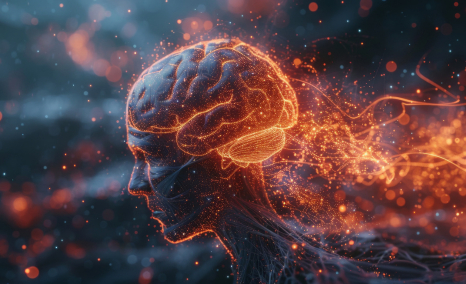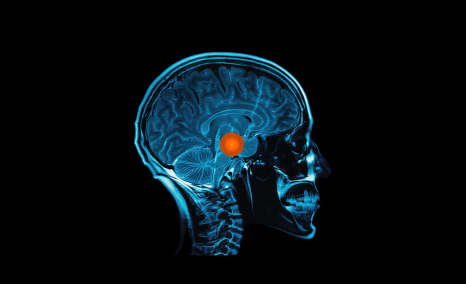13 of the most commonly asked questions about Glioblastoma multiforme, Answered
Oct 10, 2024
- What is Glioblastoma Multiforme?
Glioblastoma multiforme (GBM) (also called glioblastoma) is a fast-growing type of gliomas, which are the most common form of primary tumors of the central nervous system (CNS). These develop from star-shaped glial cells (astrocytes and oligodendrocytes) responsible for providing nourishment to the nerve cells within the brain.
Often referred to as a grade IV astrocytoma, these are the most invasive type of glial tumors that continue to grow and spread rapidly to nearby brain tissue.
According to the WHO, Glioblastoma multiforme is the most common and lethal primary malignancy for which the median survival time for patients is only 14.6 months.
Downloads
Click Here To Get the Article in PDF
Recent Articles
- Idera’s Phase I Data; DelMar Initiates Trial; Novartis’ study; Humira gets EC approval
- What can be the scope of Medical Marijuana?
- Glioma vs. Glioblastoma Therapeutics Space: Unveiling the Battlefront
- Leo Pharma’s Hand Eczema Clinical Trial Updates; GSK’s PD-1 inhibitor Jemperli Approval; Ro...
- Glioblastoma Multiforme Market: Emerging Pipeline Therapies To Keep A Keen Eye On
- What are the symptoms of glioblastoma multiforme?
Glioblastoma generally has two types of symptoms, generalised and focal. Generalized symptoms such as headaches, seizures, nausea/vomiting, memory loss and decrease in normal function are present in many different types of brain tumor, while Focal symptoms vary with the size and location of the tumor. These include language problems, seizures, sensory loss, visual changes, muscle weakness and others.
- How is glioblastoma multiforme (GBM) diagnosed?
Diagnosing of Glioblastoma multiforme can involve physical examinations including neurologic function tests such as examination of eye and mouth movement, vision, hearing, balance, coordination, strength and reflexes. To detect the tumor, sophisticated techniques such as Magnetic resonance imaging (MRI) and computerized tomography (CT) scans provide detailed images of the brain and spine. A surgical biopsy is then performed to confirm the diagnosis of GBM.
Magnetic resonance imaging every 2–3 months remains the gold standard for assessment of response and progression of the GB.
- How is Grade IV brain tumors (Glioblastoma) treated?
The current standard of treatment for a Glioblastoma multiforme is surgery, followed by radiation therapy and chemotherapy. Glioblastoma surgery aims to achieve a maximum safe resection that is to safely remove the maximum tumor without causing neurological damage. Surgery options include craniotomy, awake craniotomy, debulking surgery, skull base surgery, visualase and kyphoplasty. Chemotherapy is also one of the main forms of treatment for glioblastoma. Generally, patients start chemotherapy 2–4 weeks after surgery, at the same time as or shortly after radiation therapy. Radiation therapy is the most commonly prescribed treatment in cases where surgery and chemotherapy fails.
- What causes cancer to relapse?
Recurrence of cancer in patients with Glioblastoma multiforme is inevitable. It can be owed to the infiltrative nature of GBM cells that do not get eliminated entirely from the body. Heterogeneous nature of cancer, varied presentation due to new lesions, variable treatment regimen, and different locations of occurrence are some of the factors contributing to the recurrence of Glioblastoma multiforme.
- Why is recurrent Glioblastoma so hard to treat?
Glioblastomas are a particularly aggressive form of brain tumor. DelveInsight’s analysis shows that in 2023, the US had the highest number of glioblastoma (GBM) incident cases among the 7MM, with approximately 13,600 cases. In the EU4 and the UK, Germany had the most cases, followed by France. In the US, there were about 12,200 cases of Primary GBM/IDH-wild type and 1,360 cases of Secondary GBM/IDH mutant.
Reasons as to why glioblastomas are so aggressive and hard to treat can be due to the origin of the type of brain cell called astrocytes. These cells are star-shaped and have a distinct morphological structure with several tentacles, which makes it difficult to remove. Astrocytes, further, envelope synapses of neurons interacting with over 2 million neurons at one point of time, thus spreading the tumor rapidly.
The blood-brain barrier that stops the treatment to reach the target location also makes GBM difficult to treat. Another reason could be their high rate of recurrence.
- Is any second surgery successful in Glioblastoma multiforme Grade IV recurrence?
The decision to undergo a second surgery or repetitive surgery can improve the patient outcome, however, it depends on the location and severity of the tumor and is valid in young patients. In a meta-analysis presented by OS. Lu et al., surgery had an overall positive role in managing recurrent GBM. In a study undertaken by Chaichana et al., in a series of 578 primary GB patients, patients those were subjected to multiple resections had better median survival than those who had single time surgery.
- Can cannabis or cannabis oil cure cancer?
Cannabis constitutes 400 chemical entities with over 60 of them are cannabinoid compounds such as delta-9-tetrahydrocannabinol and cannabidiol. Research has shown that most of the cannabinoids bind to G-protein coupled cannabinoid receptors, CB1 and CB2, and act as agonists or inverse agonists.
GBM tumors are also known to express both major cannabinoid-specific receptors CB1 and CB2. The expressions of these receptors were detected in GBM cell lines – in ex-vivo primary cancer cells extracted and in-situ GBM tissue biopsies. The research concluded that high-grade gliomas, including GBM, express high levels of CB2. Also, CB2 expression positively correlates with the malignancy grade (reviewed in Ellert-Miklaszewska et al., 2013).
Thus, there can be a possibility that Cannabis may have the potential to cure Glioblastoma, however, further research, clinical trials are required and underway for a clearer picture.
- What are the benefits of a keto diet?
High-grade glioma cells mainly consume glucose, therefore, dietary carbohydrate restriction may offer therapeutic benefit. A study, conducted in vitro and in vivo, low-carbohydrate diet managed to inhibit cancerous growth due to induced ketosis and lipolysis. This implies that normal brain cells manage to compensate for glucose restriction by metabolizing ketone bodies, which GBM cells failed to do. Further, Apoptosis, which is a natural process which the body undertakes to kill the excess amount of cells in the body, may potentially occur under carbohydrate restriction. (Elles J. T. M. van der Louw et al.)
Several players in the Glioblastoma market are exploring drugs in conjunction with a ketogenic diet. On February 28, 2022, Kazia Therapeutics Limited, an oncology-focused drug development company, announced the initiation of a Phase II study for its investigational drug paxalisib. This trial, conducted at Weill Cornell Medicine, combines paxalisib with metformin and a ketogenic diet for the treatment of newly diagnosed and recurrent glioblastoma. The first patient has already been enrolled, with a second patient in the screening process.
Thus, the ketogenic diet – an extremely carbohydrate-restricted diet – continues to be an interesting therapeutic approach for Glioblastoma multiforme, however, it will take years of research and efforts to understand the mechanism behind it.
- Does brain tumor treatment in homoeopathy work?
Herbal medicines or homoeopathy are made using different parts of medicinal plants. It is a common belief in many people that herbal medicines, since natural, are safe to take. However, even these can cause potentially harmful effects, allergic reactions or may interfere with the body’s normal functioning.
Talking about therapeutic effects in the treatment of cancers, it remains largely unknown and unproven till date.
- What can cause a brain tumor to be inoperable?
Inoperable brain tumors are those tumors that can not be removed surgically. Some brain tumors are inoperable because it is not safe to perform surgery as doing so can cause further brain damage or death. In such cases, minimally invasive approaches, radiotherapies, and chemotherapies are available for the treatment.
- How does glioblastoma multiforme cause death?
Several factors like herniation, surgical complications, severe systemic illness, brainstem invasion by tumor, and neutron-induced cerebral injury can lead to death in a GBM patient. Although there has been a lot achieved in the GBM treatment, the median survival rate has not improved much. The overall prognosis continues to appear grim. According to a study, the median duration of patient survival is estimated to be between 12 and 18 months with maximal treatment, but those without any intervention die soon after diagnosis. (Davis FG et al.)
- Will there ever be a cure for Glioblastoma?
To data, Glioblastoma has no cure. However, the outlook for patients with glioblastoma multiforme is anticipated to improve in the coming years.
Key companies including Bayer, Chimerix, Aivita Biomedical, Denovo Biopharma, Northwest Therapeutics, VBL Therapeutics, Laminar Pharmaceuticals, MedImmune, DNAtrix, Immunomic Therapeutics, Imvax, MimiVax, CNS Pharmaceuticals, Epitopoietic Research Corporation (ERC), Istari Oncology, SonALAsense, and Kintara Therapeutics, among others are running several clinical trials investigating different pipeline therapies at the different clinical stage of development in Glioblastoma multiforme market.
In recent years, there has been remarkable progress in clinical trials and the development of targeted therapies for glioblastoma multiforme (GBM), with a particular focus on EGFR inhibition. Small-molecule tyrosine kinase inhibitors like erlotinib and gefitinib are gaining significant attention as promising candidates in ongoing evaluations. Cutting-edge technological advancements have further deepened our understanding of the intricate molecular pathways driving brain tumors, paving the way for more precise and effective treatments for GBM.

Downloads
Article in PDF
Recent Articles
- The Business Cocktail
- Byondis’s HER2-targeting ADC trastuzumab duocarmazine; AbbVie Migraine Drug Atogepant; Grünenthal...
- Noxxon’s NOX-A12 clinical trial; Exact Sciences buys PreventionGenetics; Nuvalent’s clinical trai...
- Glioblastoma Multiforme: Advancements in the Treatment Paradigm of the Malignant Condition
- Medical Marijuana: Is it a blessing in disguise or a curse for humanity?



